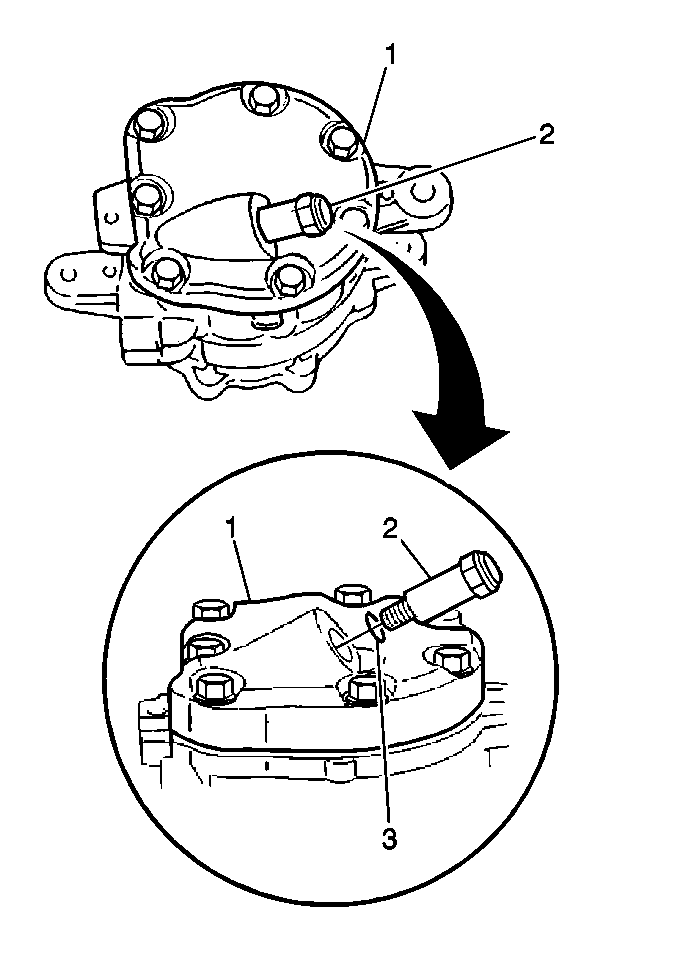Removal Procedure
- If there is any sign of oil leakage, replace the pressure relief valve.
- Discharge and recover the refrigerant. Refer to Refrigerant Recovery and Recharging .
- Remove the pressure relief valve (2) with a socket.
- Remove the pressure relief valve and the O-ring seal (3) from the compressor.
- Discard the O-ring seal.
Important:
• Keep the compressor parts and the system clean while servicing
the compressor. Cleanliness is essential for proper service. • Clean all parts with Trichloroethane, naptha, kerosene, or an
equivalent solvent and air dry the parts prior to reassembly. • Use only lint-free cloths to wipe the parts. • Discharge and recover the A/C system refrigerant, and remove the
compressor from the vehicle, before performing compressor repairs and procedures. • Drain and discard the remaining refrigerant oil when the compressor
is removed from the vehicle. Add 90 ml (3.0 fl oz) of
new oil when the repairs are complete.

Installation Procedure
- Lubricate the new O-ring seal with 525 viscosity mineral oil.
- Install the O-ring (3) seal to the pressure relief valve.
- Install the pressure relief valve (2) to the compressor.
- Evacuate and recharge the air conditioning system. Refer to Refrigerant Recovery and Recharging .
- Operate the A/C system and inspect for refrigerant leaks. Refer to Leak Testing .

Notice: Use the correct fastener in the correct location. Replacement fasteners must be the correct part number for that application. Fasteners requiring replacement or fasteners requiring the use of thread locking compound or sealant are identified in the service procedure. Do not use paints, lubricants, or corrosion inhibitors on fasteners or fastener joint surfaces unless specified. These coatings affect fastener torque and joint clamping force and may damage the fastener. Use the correct tightening sequence and specifications when installing fasteners in order to avoid damage to parts and systems.
Tighten
Tighten the pressure relief valve to 12-18 N·m (8.7-13 lb ft).
